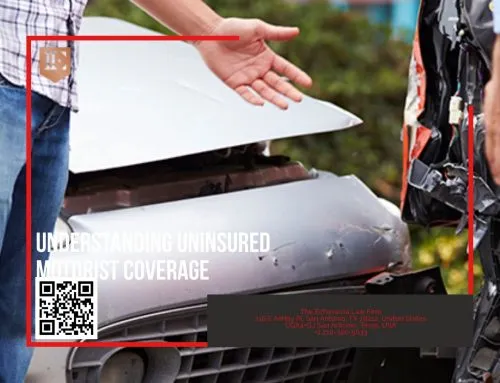When facing a personal injury lawsuit in Texas, understanding the legal process and potential defenses is crucial for a favorable outcome. There are several defenses that can be employed to contest negligence claims effectively. By understanding these key defenses, individuals can navigate legal issues, protect their rights, and potentially reduce liability. This article provides valuable insights into three top defenses to personal injury claims in Texas, with a focus on strategies such as comparative negligence, pre-existing conditions, and assumption of risk. With these defense tactics in mind, defendants can better manage personal injury cases involving auto accidents, motor vehicle accidents, or other incidents that result in severe injury or catastrophic injuries.
1. Comparative Fault Defense
Texas follows a modified comparative negligence rule, where the injured party’s compensation can be reduced based on their degree of fault in the incident in question. If the injured party is found to be 50% or more responsible for the accident, they cannot recover damages. This defense is commonly used in auto accidents and motor vehicle accidents to argue that the injured person’s own negligence contributed to the hazardous condition or dangerous condition that led to the incident.
By proving that the accident victim is at least partially responsible, defense attorneys can minimize the compensatory damages for both personal injuries and property damages, and potentially avoid punitive damages. This is particularly important in personal injury lawsuits involving complex insurance claims and when seeking a fair settlement.
Proving comparative negligence requires compelling evidence and relevant evidence such as witness statements, police reports, and objective evidence from the accident scene. A skilled attorney will gather additional evidence to demonstrate the injured party’s breach of duty or failure to exercise reasonable care, thereby establishing their contribution to the accident.
2. Pre-Existing Condition Defense
A frequent strategy in personal injury cases is the pre-existing condition defense, where the defendant argues that the plaintiff’s injuries were not caused by the accident in question but rather by a pre-existing medical condition or mental condition. This defense shifts focus from the incident itself to the injured person’s medical history, medical records, and prior medical care.
By proving that the injuries were not caused by the defendant’s actions, the defense can potentially limit or dismiss the claim. Insurance companies often employ this defense to avoid paying for injuries they claim existed before the auto accident. However, this defense must be backed by substantial medical evidence, including expert opinions from medical professionals, diagnostic tests, and thorough examination of medical records, to challenge the causation of the injuries.
The injured party’s personal injury lawyer plays a crucial role in refuting this defense by demonstrating how the accident aggravated a pre-existing condition or caused new injuries, thereby ensuring rightful compensation.
3. Assumption of Risk Defense
The assumption of risk defense is another tactic used in personal injury lawsuits to argue that the injured party knowingly engaged in an activity with inherent risks. For example, if the injured person voluntarily participated in a dangerous activity or ignored a hazardous condition, the defendant may claim that the plaintiff assumed responsibility for the potential risk of injury.
In Texas, this defense can be a strong argument if it can be demonstrated that the plaintiff had explicit knowledge of the dangers and participated willingly. This defense is often applied in cases where the duty of care is challenged, suggesting that the plaintiff accepted the risk of harm, thereby relieving the responsible party of liability.
The defense attorney may use witness statements, waiver forms, or other relevant evidence to support this claim. The personal injury lawyer representing the injured party must counter this defense by showing that the defendant still had a duty of care and breached that duty, leading to the injuries.
Other Key Considerations in Personal Injury Defense
- Contributory Negligence: Similar to comparative fault, contributory negligence asserts that the plaintiff’s actions contributed to their injuries, which can reduce or eliminate liability.
- Statute of Limitations: Defendants may claim that the plaintiff missed the deadline to file a personal injury lawsuit, which can completely bar the claim. Understanding the statute of limitations is crucial in the legal process to ensure timely filing.
- Causation and Breach of Duty: Lack of causation is another vital defense, where the defendant argues that their actions did not directly cause the injured person’s harm, or that there was no breach of the standard of care expected, which can undermine the entire accident lawsuit.
The Role of Medical Attention, Medical Care, and Documentation
Seeking immediate medical attention and medical care after an accident is essential not only for the injured party’s health but also for the legal process. Medical records, diagnostic tests, and expert opinions from medical professionals provide crucial evidence of the severity of injuries and the link between the accident and the injuries.
This objective evidence can counter defenses such as pre-existing conditions or assumption of risk. Furthermore, documenting non-economic damages such as loss of enjoyment of life, pain and suffering, and mental anguish can strengthen the injured party’s claim for fair compensation.
The Importance of Legal Representation
Navigating the complexities of personal injury claims requires a skilled attorney who understands legal principles and can develop a solid legal strategy. A top-rated personal injury attorney plays a pivotal role in gathering compelling evidence, handling the discovery process, managing the deposition process, overseeing settlement negotiations, and guiding the injured party through legal proceedings.
Their expertise increases the likelihood of a successful outcome and fair compensation, whether through a fair settlement or favorable outcomes at trial.
Types of Damages and Compensation
In personal injury cases, the injured party may seek compensatory damages, which include economic damages for medical expenses, lost wages, and property damages, as well as non-economic damages for pain and suffering and loss of enjoyment of life. Future damages for ongoing medical care and rehabilitation may also be considered, especially in cases involving severe injury or catastrophic injuries. In some cases, punitive damages may be awarded to punish the defendant for egregious conduct.
Real Case Example
In a recent motor vehicle accident case in Texas, the defendant successfully argued for comparative fault, demonstrating that the accident victim was partially responsible for the crash by failing to take reasonable steps to avoid the collision. As a result, the compensation awarded to the plaintiff was significantly reduced. This case underscores the importance of establishing comparative negligence when defending against personal injury claims and highlights the crucial role of compelling evidence and legal strategy in the recovery process.
Conclusion
In Texas, defendants facing personal injury claims have several defense strategies at their disposal, including comparative fault, pre-existing condition, and assumption of risk. Each of these defenses can significantly impact the outcome of a personal injury lawsuit, especially in cases involving auto accidents or other serious incidents that result in severe injury or catastrophic injuries. By employing these defenses, defendants can protect their rights and reduce their potential liability.
Pro Tip: Consulting with experienced personal injury lawyers who specialize in Texas law can significantly enhance your defense strategy. A qualified defense attorney can assess the legal issues in your case and develop a strategy that highlights the plaintiff’s comparative negligence or other defenses such as assumption of risk or pre-existing conditions.
Contact The Echavarria Law Firm
For comprehensive legal representation in Texas, contact The Echavarria Law Firm, where experienced attorneys provide a free review of your case. Whether it’s a motor vehicle accident, workplace incident, or other personal injury claim, The Echavarria Law Firm can help you navigate the complexities of personal injury law and legal defense. Call now at 210-320-5633 to protect your rights and explore potential defenses in your case.
Navigate the complexities of personal injury claims with The Echavarria Law Firm, bringing 30 years of triumph in the legal battlegrounds of Texas. Reach out at 210-320-5633, and access a free, comprehensive review of your case, whether stemming from auto collisions, workplace incidents, or other unfortunate mishaps.
Injury Lawyer San Antonio

